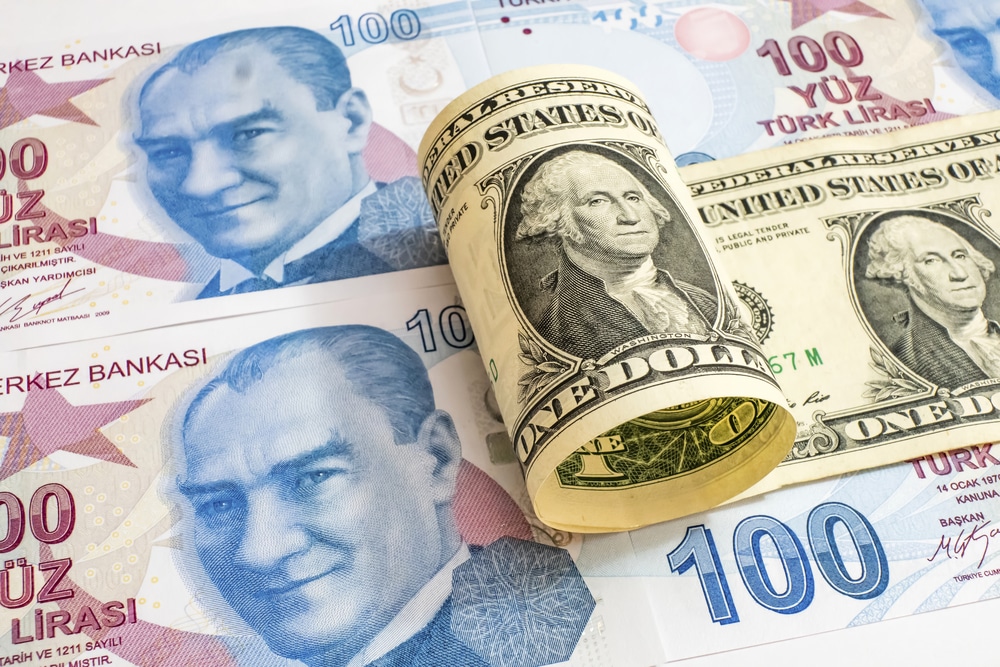
In the forex market, currencies are traded in pairs. In effect, each trade involves buying one currency while simultaneously selling another. To that end, there are three types of pairs. Major pairs include the USD on one side, coupled with a currency from one of the world’s biggest economies. Minor pairs do not include the USD but contain crosses with either the euro, the GBP, or the JPY. Exotic currencies include a currency from a major economy coupled with one from a developing country. As such, USDTRY is classified as an exotic currency pair.
The American economic environment
The US economy is currently recovering from the effects of the Covid-19 pandemic that had seen the Fed reduce interest rates to 0.25%. This central bank had also begun asset purchases to the tune of $120 billion per month, all in a bid to cushion the effects of the pandemic. As the economy recovered, these expansionary measures saw the country face rising inflation.
In light of this, the Fed is poised to begin interest rate hikes in March of 2022, with the timing of further rate hikes being uncertain. What’s more, they elected to begin quantitative tapering later this year, in a bid to shrink the central bank’s nearly $9 trillion balance sheet. Such hawkish measures are expected to inflate the value of the dollar in the global currency market.
The Turkish economic situation
Turkey is currently undergoing record-high inflation levels. A few years ago, Erdogan, the Turkish president, fired the central bank governor and placed his son-in-law at the helm of the policymaker. Recently, in mid-December of 2021, against public opinion, he spearheaded interest rate cuts by the bank, claiming that they would solve the inflation plaguing the country. At the time, inflation was at around 20%.
What’s more, he dismissed the finance minister and replaced him with a close ally to his son-in-law, the central bank’s head. This saw his grip over the country’s economy tighten even further. To cushion his subjects from the rising inflation, he decreed to increase the minimum wage, which saw the lira plummet even further. By year’s end, inflation had soared to 36%, and the TRY had depreciated 44% against the dollar. These measures have also seen the country lose credibility among many foreign investors.
Recently, Erdogan unveiled a lira saving scheme that saw the currency surge to reclaim most of its losses in December. Under this scheme, the Treasury will compensate any lira, long-term deposit holders, if the currency depreciates beyond the banks’ interest rates. For instance, if the banks dish out 15% interest on deposits, but the lira depreciates 20% against the USD, the Treasury will pay these investors the difference.
Though analysts fear this is just a temporary solution to the problem ailing Turkey, it has managed to stabilize the lira so far. Further, the UAE recently signed a swap agreement with Turkey worth $5 billion, which saw the country cushion its central bank reserves.
Tips on trading USDTRY
1. Watch out for spreads
It is characteristic of exotic pairs to be marked by higher spreads than other forex pair types. This is because they tend to attract fewer market participants, which makes them illiquid. What’s more, due to the long time taken to match market orders, slippage is common, and its fees can often run high.
Therefore, before trading the USDTRY pair, check the spreads charged by your broker and compare with other brokers because these charges tend to vary greatly. The timing of your trades is of paramount importance, as you don’t want to be trading during moments of uncertainty and high volatility. Such moments carry the most spreads and slippage costs.
2. Mind your position sizing
There are often several points on the USDTRY, which can easily confuse one into opening large position sizes as they attempt to trade the pair. This could prove detrimental because, as we mentioned, the pair is marked by exceedingly high spreads. Therefore, to minimize your risk, it is good practice to trade this pair with a tenth of your typical position size. This is to mean if you are used to trading major pairs with a standard lot, you should only trade a mini lot for the USDTRY.
3. Employ adequate risk management
Though it is always advisable to employ risk management techniques for every forex trade, this pair prompts an especial need for doing so. It would be wise to use limit orders instead of market orders to reduce slippage costs. You may also employ trailing stops to lock in any profits you gather as the trade progresses. Such stops could be pegged to Moving Average or other trend-following tools such as Bollinger Bands.
4. Watch the EURUSD pair closely
Being one of the major pairs, the EURUSD is a much more liquid and easier-to-trade pair than the USDTRY. What’s more, due to the amount of financial support that European banks extend to Turkey, any significant depreciation in the lira is likely to drive down the value of the Euro, as Turkey would be forced to default on these loans. Thus, if the USDTRY plummets, it would be wise to short the EURUSD as a measure to hedge your positions.
5. Keep up to date with Turkish and US economic news
Any economic developments in the two countries could have a significant effect on the pair’s value. For instance, any news of rate hikes or drops from either of the countries would provide helpful insights into the expected price action of the pair.
Conclusion
The USDTRY is one of the exotic currency pairs that are prone to volatile price moves. These moves can present unique opportunities for profit. However, spreads can be high, as well as slippage costs. Therefore, when trading the pair, ensure your risk management techniques are well articulated and avoid trading large positions. Additionally, you should keep a close eye on economic news from both the US and Turkey.








Leave a Reply